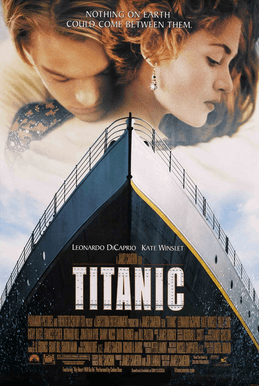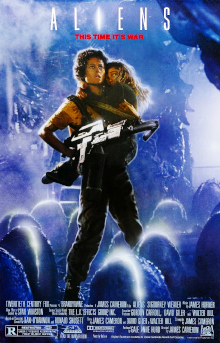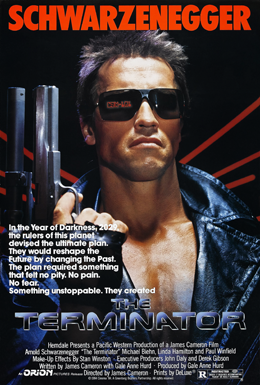
JAMES CAMERON

SYNTHESIS OF MOVIE MAGIC WITH REAL WORLD SOCIAL ENGINEERING AND LOVE
By PETER THOMAS BUSCH
The movie of the century is one that sets a high water mark in the industry but also resonates with audiences by encapsulating the circumstances of an era.
Casablanca (1942) defined the interwar years and the flight of refugees from conflict zones during World War II. The film’s charm was in part the portrayal of the universal human struggle to find and hold onto love during the most adversarial times.
A generation later, Hollywood filmmakers struggled to describe the human condition of America at war in Vietnam. This era of new filmmakers emerging as independent voices against the studio system, that often demanding hegemony with the American experience, included Francis Ford Coppola, George Lucas, Steven Spielberg and Oliver Stone.
These newly schooled filmmakers defined themselves at the same time meeting a universal need to define the national identity occasionally in the same film but more often than not in separate film projects.
Coppola creates Italian American nuances in the Godfather (1972) but then redefines filmmaking with Apocalypse Now (1979) about the Vietnam War. Lucas reimagines a generation with American Graffiti (1973) but then redefines the future with Star Wars (1977). Spielberg and Jaws (1975) and then Spielberg and Indiana Jones (1982) and Spielberg and Schindler’s List (1994).
These films were innovative at the time in terms of storytelling and camera work and building images on screen through the editing process. But there seems to be agreement now that one of the great innovators was filmmaker James Cameron.
Like Stone, Cameron earned early credits in the film industry as a writer. Cameron though quickly distinguished himself with highly stylized films that became shaped by his artistic talents and engineering skills in prop and set design.
Cameron quickly learned how to seamlessly blend scenes with the camera work and the melding of all these attributes to the point of producing spectacle and big event movie releases.
Narratives were tactically edited together staccato style with constantly changing camera angles, moving from closeups to long shots and back again to close ups, and then shortened action bits.
Cameron loved building and engineering things beginning even before he rounded up his neighborhood friends as a child to build him an airplane in the backyard from bits and pieces of scrap reclaimed and repurposed from the neighborhood.
This creative energy became mythical by the time Titanic was released in 1997 and then Avatar in 2009.
Now the auteur label representing a creative voice in film is often thrown at the filmmaker who maintains stylized control of his voice through his many talents of writing, designing worlds and layering on the aesthetics of a visceral reality.
In Terminator (1984) the entire film project reflects Cameron’s interests in machines and the potential for machine driven apocalyptic futures. The past is merged with the future to create a running present when soldiers from another time return to Earth in an attempt to control history.
Arnold Schwarzenegger plays The Terminator, a machine sent from the year 2029 to 1984 to kill the mother of the rebellion leader before the rebellion leader is born.
A battle between man and machine begins to play out to an inevitable conclusion in front of the camera in a sort of preemptive mission when a human soldier arrives to stop the Terminator from killing Sarah Connor.
Cameron designs graphic images of a one man killing machine that continually adapts to the environment and physically rejuvenates until the mission is complete. But the auteur also designs the dark world of the future for flash forwards by painting machines in an apocalyptic landscape.
Producers initially viewed the script as a popcorn film, but the final product proves so entertaining and thought provoking as to eventually take on cult status and spawn more complicated sequels and spinoffs.
If Cameron had a silver dollar for every time someone stated: “I’m The Terminator’, Cameron would have been able to retire early.
The vision of machine and man and an apocalyptic future illustrates motivations if not influences from Star Wars, Alien (1979) and Blade Runner (1982). So, no surprise that Cameron made a pitch to write and direct the Alien sequel, Aliens (1986) starring Sigourney Weaver as the first female lead in the feature film action hero genre.
Aliens reinforces the impressions of militaristic combat from the Vietnam War generation of filmmakers. War is ever present and everything, even science fiction fantasy, must have that tone and atmosphere of the drill sergeant and all the gadgets and toys of a modern military operation.
Cameron builds an off world space command station and a more distant settlement colony for this franchise film about violent alien creatures ten times more dangerous in space than the dinosaurs on Planet Earth.
In Terminator, filming takes place in the streets of Los Angeles. In Aliens, everything is imagined and nothing in the imagination is taken for granted.
The suspicion of and paranoia about government conspiracy theories leading to the doom of civilization spawned by the Vietnam War and those discussions within the collective consciousness begin to collide for Cameron.
Aliens highlights the military failures that diminished the moral authority of America. The reckless corporation skipping too quickly through due diligence checks becomes a companion piece.
And then the human spirit is demonstrated through love contrasted against hate.

Cameron describes with pictures how people pressured by adversity find a way to survive through that same bonding required for the love emotion. Ripley falls for a surviving officer who survives in part by listening to the experienced interstellar spaceship commander’s combat advice when trying to escape from the aliens.
The most romantic of stories combines all these elements in the modernization of a nautical disaster with reconstructed scale sets and auteur story telling.
Titanic (1997) stars Leonardo DiCaprio and Kate Winslet who find career defining roles in this blockbuster event film. And for Cameron, years of thought about the past, the present and the future merge with ideas he has been developing about machines, film and humanity.
And those old sepia pictures of nautical machines viewed during a lifetime of research for that perfect film narrative create a nexus washed through the new film industry magic with a 775 scale replica of the Titanic built on a 40 acres film stage.
The film won 11 Oscars, including best cinematography, best director and best picture.
Cameron creates this world view nuanced by the hubris of the newly industrialized world on the largest vessel at the time surrounded by deathly cold ocean waters.
DiCaprio plays Jack Dawson, a struggling artist travelling from Paris who must win his tickets on the Titanic in a poker game with Swedes who become angry when they lose the game as the ship finishes the last boarding call.
Cameron infused bits and pieces of his biographical information such as Jack being an artist from the working class not fitting in with the aristocratic cliches on ship. Cameron was a truck driver as a young man while he shucked for work in the film industry designing sets and writing scripts before persuading producer Gale Anne Hurd to shop the Terminator script around the movie studios. Cameron had been responsible for the fatalistic, futuristic cityscapes of John Carpenter’s Escape From New York (1981), starring Kurt Russell as Snake Plissken and Lee Van Cleef as Hauk.
Cameron was actually trying to sell a script to producers David Giler and Gordon Carroll when he was offered a chance to work on the Alien sequel story. Giler and Carroll already had a basic idea for the sequel, but the producers of Alien needed a writer to bring the script to life prior to production.
Cameron’s greatest trick as an auteur is to make everything seem authentic. The characters are often strangers to one another and gradually through character development and rolling out the narrative become bonded and sometimes fall in love.
Jack and Rose had come from opposite sections of town as well as opposite sections of the Titanic to such an extent that they likely should never have even met. But Cameron pulls the characters from distinct social economic backgrounds together by having Rose rebel against her future state of being married to money and an aristocrat with few insights into feminine sensibilities.
This love story develops as the industrial age and all the hubris of the era begin to dissolve into the Atlantic Ocean when the Titanic hits an iceberg.
The industrial age is encapsulated in the Titanic with the coal fired engines and the luxurious spaces on board felt as much as the pull of lovers. The film about the worst industrial tragedy of the era caused by human frailties linked to hubris and a lack of risk aversion becomes the talk of the film industry and ultimately a bigger hit than all the director’s other films combined.
Cameron shuffles the film reels a bit selling a romantic view about humanity but then illustrating all that can go wrong in an imperfectly engineered universe. To make matters more interesting for himself, he sometimes flips the emphasis, making the love story in the present more important than the military battle in the futuristic apocalypse.
Titanic is a good example of this shuffle, as is Avatar (2009).
Cameron by now is an experienced ocean diver and deep sea explorer having learned to dive in military fashion in Buffalo, New York when he was still living at home in Ontario, Canada.
This fascination with that other world going on undersea influences film production to such an extent that Cameron totally submerges in another world, including using motion capture performances instead of actors wearing make-up, prosthetic masks and stupid puppet suits.
Avatar is right out of Vietnam with humans colonizing an inhabitable moon covered in rainforest type jungle material.
The main industrial activity is mining that is threatened by an unindustrialized indigenous village. The theme of machine and humanity forms a nexus with American imperialism and the use of specialized military forces to knock open the door in foreign markets for capitalistic democracies.
This military struggle in the jungle shares equal screen time with a love story between a US Marine and an indigenous female.
Cameron creates a double blind by having the marines inserted into the villages using a type of futuristic motion capture performance technology while the actors for the films portraying the characters primarily appear as the indigenous population by using motion capture performance technology.
The filmmaker may have by now come full circle with his own art except for the preplanning of several sequels, including Avatar: The Way of Water (2022).
The end result of course is a perfect illusion using the newest film technology to build a world that is decidedly off-world and equally glib as any other world previously created because humanity is ultimately doomed to repeat the same mistakes.
The humans attempt to colonize the indigenous population instead of cooperating with them, and then rely on technological superiority only to lose control of the machines, which ultimately makes a mutiny/rebellion of some sort possible.
Cameron’s filmography exhibits an auteur who has gradually learned to fuse his skills and build an imagined world in which to film a cinematic masterpiece.

The Cinema of James Cameron: Bodies in Heroic Motion, by James Clarke, London, Wallflower Press, 2014.
The Futurist: The Life and Films of James Cameron, by Rebecca Keegan, New York, Crown Publishers, 2009.